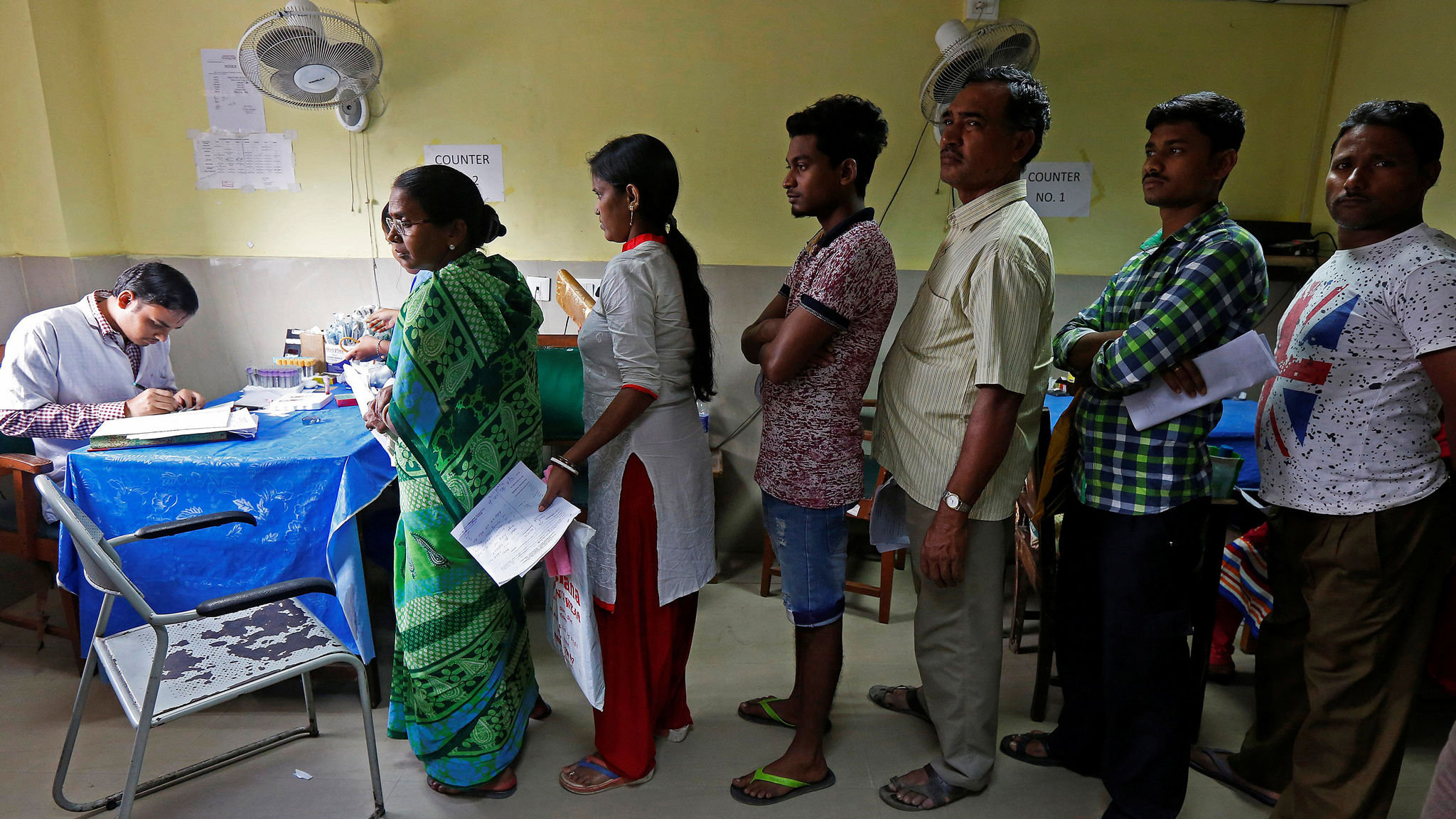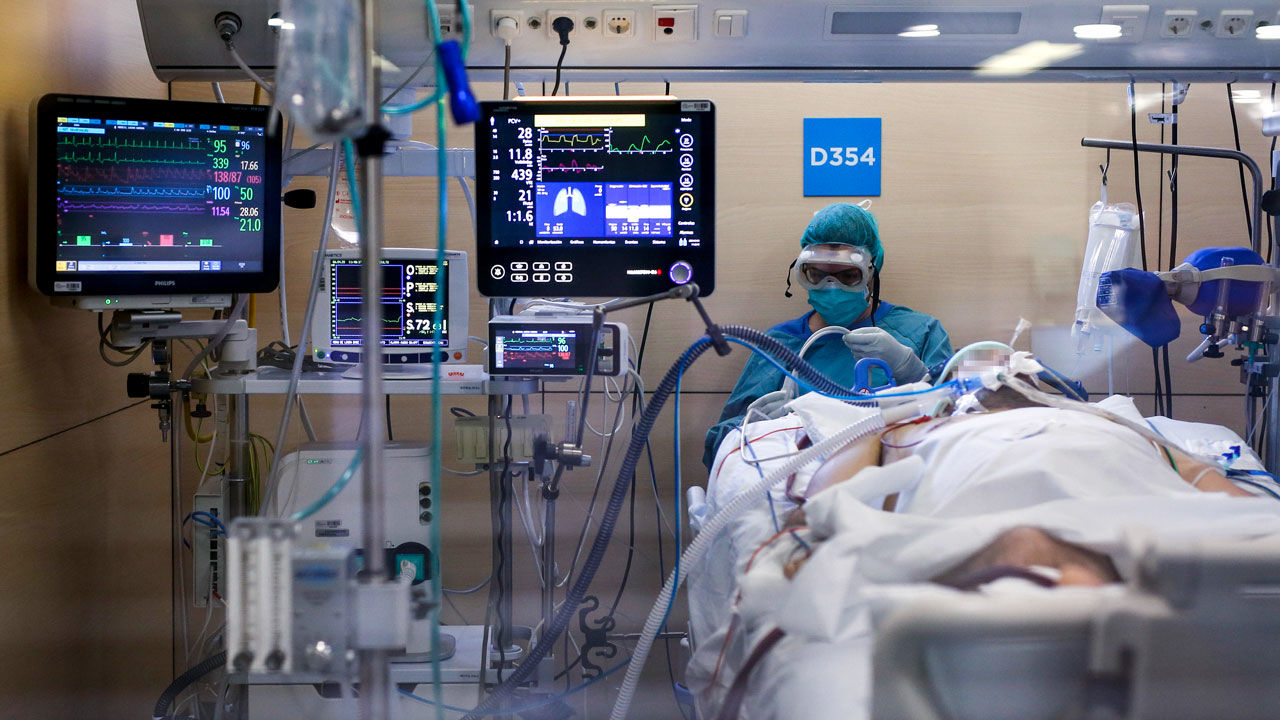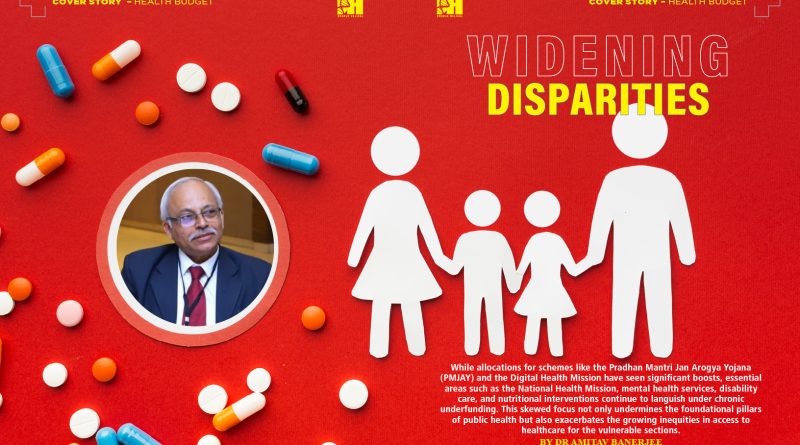Widening Disparities
 While allocations for schemes like the Pradhan Mantri Jan Arogya Yojana (PMJAY) and the Digital Health Mission have seen significant boosts, essential areas such as the National Health Mission, mental health services, disability care, and nutritional interventions continue to languish under chronic underfunding. This skewed focus not only undermines the foundational pillars of public health but also exacerbates the growing inequities in access to healthcare for the vulnerable sections.
While allocations for schemes like the Pradhan Mantri Jan Arogya Yojana (PMJAY) and the Digital Health Mission have seen significant boosts, essential areas such as the National Health Mission, mental health services, disability care, and nutritional interventions continue to languish under chronic underfunding. This skewed focus not only undermines the foundational pillars of public health but also exacerbates the growing inequities in access to healthcare for the vulnerable sections.
By Dr Amitav Banerjee
Slogans and catchwords alone cannot deliver. Band-Aids over deep compound fractures do not work. This sums up the annual health budget, which has become an occasion to apply superficial fixes over fissures in our public health system—one that is gasping for breath due to sustained neglect since independence. Rituals and mantras can offer hope but often fail to live up to their promise.
For an effective public health system that positively impacts people’s health, facilities and human resources must be positioned to ensure accessibility and affordability for the common citizen. You cannot win a football game by neglecting the goalkeeper and deep defenders while focusing only on the forwards to score goals and impress the selectors and their sponsors. To combat illness and promote health, the same strategies that work on the playing field are applicable. It is common sense rather than rocket science.
In this commentary, we will review the health sector allocations in the recent budget announced in Parliament vis-à-vis the ruptures in our public health infrastructure.
The Budget Speech by the Finance Minister: Right Noises Without Any Bang for the Buck
In her budget speech, Finance Minister Nirmala Sitharaman made all the right noises, which might impress those unfamiliar with the ground realities of our public health sector. The Minister emphasised “access to high-quality, affordable, and comprehensive healthcare” as a major component of “Viksit Bharat.” This is indeed the perfect strategy for any public health system. However, the moot question remains: Do the allocations match these ambitious statements? The financial outlays reflect a piecemeal, populist approach without the potential to make any significant impact on the factors ailing our healthcare system.
While the total financial outlay for health shows some increase in the allocation to the Ministry of Health and AYUSH relative to last year’s budget, the buck does not have the bang. Though the allocation has risen from INR 94,671 crore to INR 1,03,851 crore, when adjusted for inflation, the effective increase amounts to just around 3 per cent. More significantly, this is 4.7 per cent less than what was actually spent in 2020–21. Are we moving backward in the allocation of resources to the health sector? The figures suggest so. Paradoxically, this translates into the ground reality that the healthcare available to citizens in 2021 was, in real terms, superior to what is available now. The financial allocation has not kept pace with soaring costs. The share of health in the total Union Government Budget has declined from 2.26 per cent to 2.05 per cent compared to 2020–21.

Cracks in Programs Addressing Public Health Challenges Likely to Deepen
Our real health challenges lie in providing accessible and affordable healthcare to the marginalised, vast stretches of the rural population, and the urban poor. Another formidable challenge is addressing our embarrassingly high rates of under-five malnutrition, which surpass even those of the poorest regions in sub-Saharan Africa. To tackle these issues, Union Government schemes such as the National Health Mission (NHM), the Pradhan Mantri Swasthya Suraksha Yojana, and various nutritional programs should have received priority in budget allocations. Surprisingly, against all expectations, these programs faced cuts in funding despite the commendable work done by dedicated workers in these initiatives.
The NHM is a well-conceived program designed to improve primary and secondary healthcare, including maternal and child health, disease control for both communicable and non-communicable diseases, and several nutritional interventions. Many of these schemes were relegated during the pandemic years and have suffered setbacks. To recover from these reverses, assertive action was required instead of the stepmotherly treatment meted out to these programs. This neglect will have severe negative consequences. Critical services such as safe and institutional deliveries, routine immunisation, nutrition services for children, and tuberculosis treatment will face a resource crunch.
The NHM budget also caters to the honorariums for grassroots community health workers like the ASHAs, who earned global recognition for their commendable work during the pandemic. The limited allocation to the NHM budget will impact the remuneration for these workers, who have been rightly demanding minimum wages for a long time. These workers are the backbone of our community health programs, and a cut in the NHM budget is a serious cause for concern.

Similarly, the recently launched network of Health and Wellness Centres (HWCs), which are part of the NHM, will also be adversely affected by budgetary cuts.
A strong public health system is not built through slogans, catchphrases, and token increases in allocation. It requires well-planned and adequately funded initiatives that address real, pressing concerns. Unfortunately, this budget, like many before it, falls short of the urgent need to mend the breakages in our healthcare infrastructure.
Glitz and Glamour to Cover Up Deeper Cracks
While the health sector faces chronic underfunding, schemes that benefit the corporate sector, such as the Pradhan Mantri Jan Arogya Yojana (PMJAY) and the Digital Health Mission, continue to receive higher allocations despite their questionable impact. PMJAY, in particular, appears to be the favoured initiative of policymakers, even in the face of multiple failures and a damning report by the Comptroller and Auditor General of India (CAG). The scheme primarily benefits corporate hospitals, offering little in terms of accessibility to the urban and rural poor who rely on overstretched and crumbling public healthcare facilities.
In the 2023-24 budget, INR 7,200 crore was allocated to PMJAY, of which only INR 6,670 crore was utilised. Yet, in the present budget, the allocation has been increased by 24 per cent to INR 9,406 crore. This increased outlay to PMJAY strengthens the unregulated private hospital sector, creating opportunities for exploitation of the poor. Cases of unnecessary procedures, as highlighted by the recent deaths of two PMJAY beneficiaries after angioplasty at a private hospital in Ahmedabad [The Indian Express, Ahmedabad, November 12, 2024], underscore this risk. More critically, the skewed allocation diverts resources from vital public health programs like the NHM, exacerbating the opportunity cost of misplaced priorities.
The growing PMJAY allocation must also be viewed in light of the 100 per cent Foreign Direct Investment (FDI) allowance in health insurance, which has further opened the market to global insurers, accelerating the privatisation of healthcare. Moreover, with the inclusion of the elderly under PMJAY, insurance premiums have soared, making coverage increasingly unaffordable.
Similarly, the Ayushman Digital Health Mission has seen an astonishing 61 per cent budget increase in real terms. However, this remains a gamble, as the scheme has struggled to integrate private players and obtain their data-sharing commitments.

Blindly prioritising corporate profits over public healthcare has dire consequences. Large sections of India’s marginalised population—Dalits, Adivasis, and rural communities—reside far from urban centres, where the best PMJAY-empanelled hospitals are located. The financial burden of long-distance travel and indirect costs due to work absenteeism often leads to significant out-of-pocket expenditures, further undermining the scheme’s effectiveness.
Exemption from Customs Duty for Essential Drugs
The Finance Minister announced customs duty exemptions on certain drugs for cancer, rare diseases, and severe chronic conditions. However, despite these waivers, patented drugs remain prohibitively expensive for ordinary patients. A long-term solution would be to facilitate domestic production of generic alternatives, ensuring affordability and accessibility.
The proposal to establish daycare centres for cancer treatment in all district hospitals is a positive step. However, it remains to be seen how effectively these hospitals—many of which struggle to manage even routine cases—can handle specialised oncology care. A recent CAG report has highlighted severe shortages of doctors and healthcare personnel in government hospitals and health centres, raising concerns about implementation.
Meagre Health Research Budget
Health research continues to receive inadequate funding, with a paltry 3.8 per cent share of the total health budget—only a marginal increase from the previous 3.5 per cent. This leaves a vacuum that private pharmaceutical companies will likely fill with their own research grants. However, such heavy reliance on corporate funding raises ethical concerns about biases and conflicts of interest, making independent, objective research increasingly difficult.
Neglect of Mental Health and Disability Care
Mental health issues are on the rise, yet the National Mental Health Program remains grossly underfunded. The premier institution for mental health, the National Institute of Mental Health and Neurosciences (NIMHANS) in Bengaluru, has suffered a 4.44 per cent real-term budget cut. Additionally, people with disabilities continue to be sidelined, receiving a mere 0.025 per cent of the total budget allocation—a glaring oversight in a country with a significant disabled population.
Failure to Prioritise Universal Healthcare Access
The Ayushman Bharat Health Infrastructure Mission (PM-ABHIM), touted as India’s most ambitious healthcare infrastructure initiative, has seen abysmally low utilisation, with less than 50 per cent of allocated funds being spent annually. The program was designed to enhance public healthcare capacities at primary, secondary, and tertiary levels, aiming to strengthen the neglected public health system.
However, successive governments have strayed further from the vision of the Bhore Committee Report (1946), which had recommended comprehensive public healthcare infrastructure: a 75-bed primary health centre for every 10,000–20,000 people, a 650-bed secondary hospital at the block level, and a 2,500-bed tertiary hospital at the district level. Instead of building this robust skeleton, years of neglect have left India’s public healthcare system riddled with fractures.
Annual health budgets now resemble a ritualistic exercise of applying superficial therapies over deep structural wounds. Without a significant course correction, India’s healthcare crisis will only deepen, leaving millions of citizens without access to essential medical services.
(The author has served as an epidemiologist in the armed forces for over two decades. Currently Professor Emeritus at Dr DY Patil Medical College, Pune, he was recently ranked among the world’s top 2 per cent scientists by Stanford University. He has also penned Covid-19 Pandemic: A Third Eye.)

